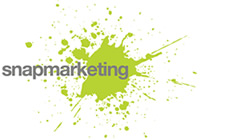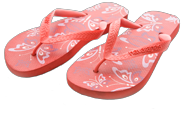We thought it would be a good time to look ahead at how the web will change over the next 12 months. What current website design trends should we all be aware of, and how should we adapt our on-line marketing to ensure the greatest positive impact on our business? Here are some of the big design trends, curated from the experts by our guest blogger Amy Hermitage, and our observations as to its potential effect on your business.
Parallax scrolling
Parallax website designs are all the rage at the moment. The layout is arguably more interesting than a traditional ‘flat’ website and gives movement and life to the website design, because each element moves independently. It can be exciting to see the content of the page unfolding in front of you.
Parallax website designs work very well for a business with a single commercial proposition or for websites that are meant to be viewed just one or two times. They also work well for portfolio style websites, for example a wedding photographer or landscape gardener, because they can showcase work and allow swiping for tablets.
There are several downsides to parallax websites over traditional websites. They can take longer to load and unless the proposition is very singular, it is virtually impossible to optimise successfully for a variety of keywords. Poor page load speed will annoy the customer and risk them bouncing quickly off the website, and this will cause Google to apply lower ranking signals to the website. This will reflect in poor competitive performance. We look at the effects on SEO in more detail in our next blog.
What are others saying?
“Scrolling, once reserved for getting from top of a page to the bottom, is being used in more creative capacities to deliver content online. Where designers in the past were concerned about keeping the most important content ‘above the fold’, we’re seeing this old-fashioned notion disappear, as ‘the fold’ is now harder to define, as users are viewing content of screens of all different sizes and resolutions.” – Jamie Leeson, Zazzle Media
“Look for parallax effects that move up, rather than down, and movements that capture a much more layered design. The key to almost every design trend in 2017 is that touch of reality and parallax will be no exception. The more real the movement looks on the screen, the more users will want it.” – Carrie Cousins, DesignModo
Big, bold typography
Many companies are using big, bold typography on their websites to make a real statement and grab attention. Big bold type is often used in combination with a simple, minimalist design style or paired with image layering and parallax scrolling. A segment of web-copy, highlighted by the big, bold typography should be a key element of the proposition to help customers understand what the company is about – in an instant. In an age when people are overloaded with information, and generally intolerant of poor on-line messaging, simple and to the point statements are useful, stand out and play to the ‘skimmers’.
What are others saying?
“This style [big and bold typography] works best when the rest of the page is kept minimal and clean.” – Karla Cook, Hubspot
“Big and bold doesn’t necessarily refer to the weight of the font! Rather, it’s about dedicating significant screen real estate to a single, simple yet all-encompassing statement about the product or service.” – John Moore Williams, Webflow
“Typography is also a powerful visual medium, able to create personality, evoke emotion and set tone.” – Jamie Leeson, Zazzle Media
Illustrations
Illustrations are a great way to add a unique and personal touch to a company’s website. They allow companies to set a certain tone or atmosphere on their website. This can allow the customer to feel as if they have a better understanding or connection to the company. With a unique style of illustration, a company can establish their brand identity.
What are others saying?
“Adding illustrated touches to your site is a great way to inject a little personality” – Karla Cook, Hubspot
“Illustrations are fantastic, versatile mediums for creating visuals which are playful and friendly and add an element of fun to a site.” – John Moore Williams, Webflow
“Illustrations which are full of personality and tailored to match the tone of the brand” – Jamie Leeson, Zazzle Media
Geometric designs and fonts
Geometric designs have been around for some time now and we’ve seen brands switch to minimalist geometric icons and strong colour blocks but this trend is still in style. The use of geometrical patterns, shapes, lines and fonts can liven up a website and make it look more modern.
This design trend can be used in many different ways – backgrounds, graphic elements and illustrations. Due to the low-bandwidth consumption of geometric shapes and designs in comparison to ‘heavy’ photos (which take longer to download because they are more detailed), they are becoming more commonly used in website design.
What are others saying?
“Whimsical patterns and shapes are popping up more frequently on websites, adding some flair in a landscape otherwise ruled by flat and material design.” – Karla Cook, Hubspot
“These typefaces are much more distinctive than the”invisible”, neo-grotesque ones. A more “aggressive” and expressive character of a website can be especially achieved with the use of thicker weight.” – Paweł Pacura, Awwwards
“Be it the use of circles around images, photos that are geometric heavy, or the overall design of the site relies heavily on the use of lines and patterns. There is nearly infinite amount of ways in which you can integrate geometric shapes, lines, and patterns into your website.” – Amber Leigh Turner, The Next Web
Animations and GIFs
Animations and GIFs have been around for a long time, but previously have mostly been used as decoration. Nowadays animations and GIFs are used to improve the functionality of a website as well.
Animations are often used on loading screens to distract users from the waiting time and add something fun. They can also be used to show that an element of the website is interactive as when you hover over it, it may move. Also, subtle animation in the background can make the website for memorable and engaging.
What are others saying?
“We’re seeing more websites move away from the use of static imagery and finding new ways to engage users and be unique in their approach to communicating. Story-telling and personality is something more and more brands are working on in hopes to capture their user’s attention.” – Jamie Leeson, Zazzle Media
“Animations are starting to be used more heavily on websites as they are often a great way to show how something works, how to do something, or otherwise reveal meaningful content. GIFs have been used for this purpose, but now we are seeing GIFs becoming more sophisticated.” – Amber Leigh Turner, The Next Web
“GIFs can also be used for your web design. But don’t overuse them – they work well to draw a user’s attention. GIFs enable you to provide a richer product experience, explain a workflow, or simply provide a how to guide for your users.” – Thomas Peham, UserSnap









